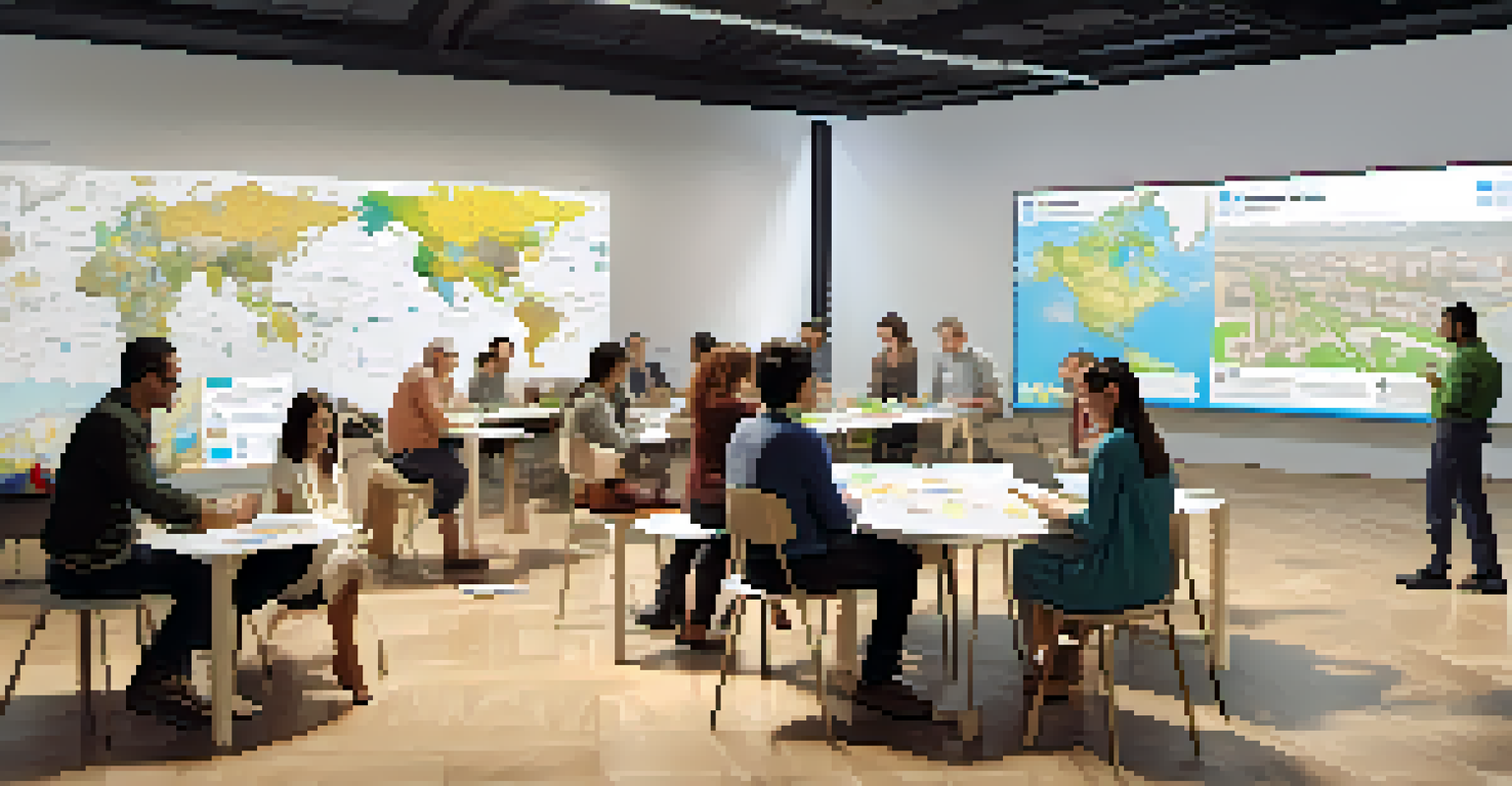Role of GIS Technology in Urban Planning and Governance

Understanding GIS Technology and Its Importance
Geographic Information Systems (GIS) technology is a powerful tool that helps in visualizing, analyzing, and interpreting spatial data. It integrates various forms of data, including maps, statistics, and imagery, which are crucial for informed decision-making. By providing a visual representation of data, GIS allows urban planners to see patterns and relationships that may not be obvious at first glance.
Geographic Information Systems (GIS) are tools that can bring together data and information in a way that can help us make better decisions about our communities.
For example, imagine trying to understand traffic congestion in a city. A GIS can overlay traffic data with road maps, highlight problem areas, and even show demographic information. This holistic view enables planners to develop targeted solutions, such as optimizing traffic lights or adding new public transit routes.
Thus, the importance of GIS in urban planning cannot be overstated. It serves as the backbone for data-driven decision-making, allowing cities to become more efficient, sustainable, and livable.
Enhancing Decision-Making with Spatial Analysis
One of the standout features of GIS technology is its ability to conduct spatial analysis. This involves examining the locations, attributes, and relationships of features on the Earth’s surface. Urban planners can use spatial analysis to assess land use patterns, identify suitable locations for new developments, and evaluate the impact of proposed projects.

For instance, if a city plans to build a new park, GIS can analyze factors such as population density, proximity to existing green spaces, and environmental impact. This information helps ensure the park meets the community's needs and encourages sustainable urban growth.
GIS Enhances Urban Planning Decisions
GIS technology provides valuable spatial data that helps urban planners visualize patterns and make informed decisions for sustainable development.
Ultimately, spatial analysis empowers urban planners to make informed, data-backed decisions that enhance the quality of life for residents while promoting responsible development.
Public Participation and Community Engagement
GIS technology not only aids planners but also fosters public participation in the planning process. By making spatial data accessible to the community, residents can engage more meaningfully in discussions about urban development. Online mapping tools and interactive platforms allow citizens to visualize changes in their neighborhoods and voice their opinions.
In the 21st century, the importance of geospatial information will be critical to our economic and social well-being.
For example, a city might host a public workshop where community members can use GIS tools to suggest improvements or express concerns about planned projects. This collaborative approach not only builds trust but also ensures that diverse perspectives are considered in the planning process.
By actively involving the community, urban planners can create more inclusive and representative development plans that resonate with the needs and desires of the people they serve.
Optimizing Resource Management with GIS
Resource management is critical in urban planning, and GIS technology plays a vital role in optimizing these resources. Whether it's water distribution, waste management, or emergency services, GIS helps planners allocate resources more efficiently. By analyzing spatial data, planners can identify areas that require more attention and make informed decisions about resource allocation.
Imagine a city dealing with water shortages. Using GIS, planners can analyze water usage patterns and identify leakages or areas with excessive water use. This insight allows them to implement targeted initiatives like conservation programs or infrastructure upgrades.
Boosting Community Engagement
By making spatial data accessible, GIS fosters public participation, allowing residents to contribute to planning discussions and shape their neighborhoods.
In essence, GIS technology enhances resource management, leading to more sustainable urban environments and improved quality of life for residents.
GIS in Disaster Management and Resilience Planning
Disaster management is another critical area where GIS technology shines. From natural disasters like floods and earthquakes to man-made incidents, GIS helps urban planners assess risks and develop effective response strategies. By mapping hazard zones and analyzing historical data, planners can create more resilient urban environments.
For example, GIS can identify flood-prone areas and facilitate the development of better drainage systems or emergency evacuation routes. It also allows planners to simulate various disaster scenarios, enabling them to prepare more thoroughly for potential crises.
Ultimately, GIS enhances a city's ability to respond to disasters effectively, protecting lives and minimizing damage to infrastructure.
Integration with Smart City Initiatives
The rise of smart city initiatives has further amplified the role of GIS technology in urban planning. Smart cities leverage technology and data to enhance the quality of life for residents and improve city services. GIS plays a crucial role in collecting, analyzing, and visualizing data from various sources, including IoT devices and sensors.
For instance, a smart city might use GIS to monitor air quality in real-time, allowing planners to implement timely interventions for pollution control. This integration helps cities adapt to changing conditions and make proactive decisions that benefit the community.
Optimizing Resource Management
GIS aids in efficient resource allocation, enabling urban planners to identify needs and implement targeted solutions for better management of city resources.
As urban areas continue to grow, the synergy between GIS technology and smart city initiatives will become increasingly vital in shaping our future urban landscapes.
Challenges and Future Directions of GIS in Urban Planning
Despite its many advantages, the integration of GIS technology in urban planning does face challenges. Issues such as data privacy, the need for skilled personnel, and access to technology can hinder its effective implementation. Moreover, not all communities may have the resources to adopt advanced GIS tools, which could lead to disparities in planning outcomes.
To address these challenges, it is essential for cities to invest in training and resources that promote GIS literacy among planners and the community. Collaborative efforts between governments, educational institutions, and tech companies can help bridge the gap and ensure equitable access to GIS technology.

Looking ahead, the future of GIS in urban planning holds immense potential. As technology continues to evolve, cities can leverage advancements in GIS to create more resilient, sustainable, and inclusive environments for their residents.